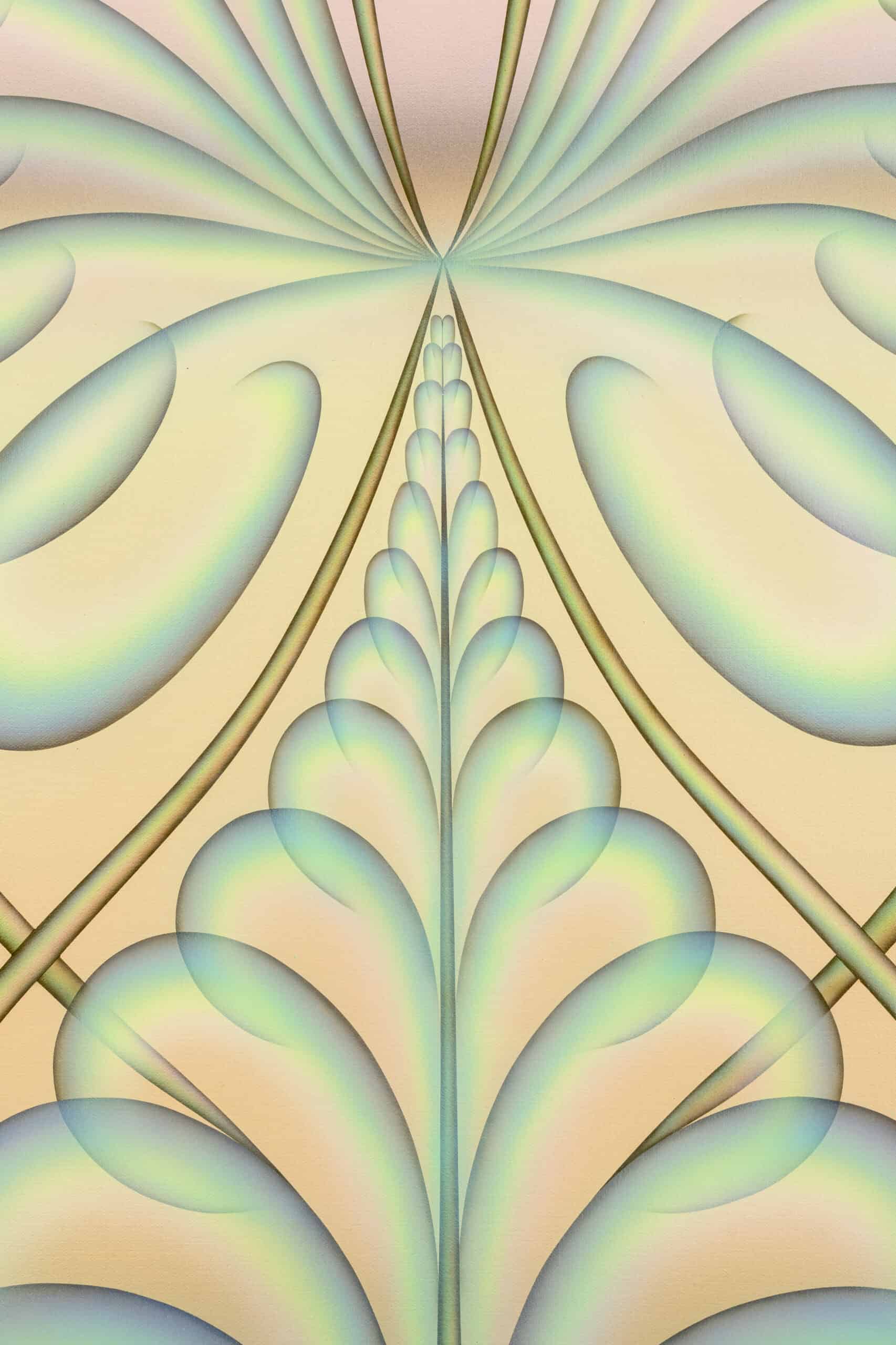
Molly Greene, Pelt, 2023, (detail)
Two swelling forms intersect at their tip, creating a torso, a skin, like the bottom curve of the buttocks and the raising of shoulders or the cupping of lungs. Translucent and spectral, they form a frond-like interior, like a swaying fern or an unfurling monstera leaf before it has split. A blurred body existing between human and flora, Molly Greene’s Pelt reimagines the boundaries between man and nature and interrogates the ways in which we divide ourselves.
Reminiscent of Pauline Cummins’ Inis t’Oirr/Aran Dance (1985), Greene’s Pelt interweaves the silhouetted torso and its fibrous shroud until they blend into one, indistinguishable from one another. Like an animal wrapped in the markings that distinguishes one from others of its kind, Pelt questions what patterns sprawl across the skin of a human; what accessories adorn our self-determination? Rather than the markings and signifiers of our performed gender, race, and species in our construction of self — how we seek to distance ourselves from different groups — Greene’s imagined ‘pelt’ of humanity is abstracted away from differentiation and instead seeks what links us together.
A longstanding inquiry for Greene, her 2019 doctorate at Yale, “Deluge: On the Female Animal”, interrogated the limitations and violences of ‘bound’ humanism and nature in aesthetic culture, exploring different ways of being through a post humanist framework — wherein humans are decentred and hierarchies of importance dissolved. With her own creative practice deeply linked to this investigation, her paintings reject taxonomies and work to break down the notions of genre and categorisation by disrupting the consensus reality that creates and maintains the boundaries between each of us and with other species.
Interested in open readings and interpretations of visual communications, Greene’s paintings ask what a human could be, rather than what one should be, when the borders and categories that we define ourselves with have been broken down. Creating paintings of reimagination and limitless possibilities, each piece is a line or interjection within a wider dialogue across her body of work. Slowly and laboriously articulated through her airbrushed acrylics, Greene gives a voice to her canvases, allowing them to commune with any being that desires to listen
(By Teddy Woods)
